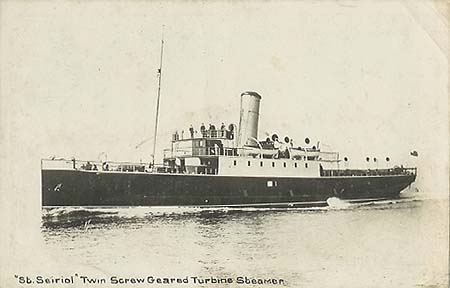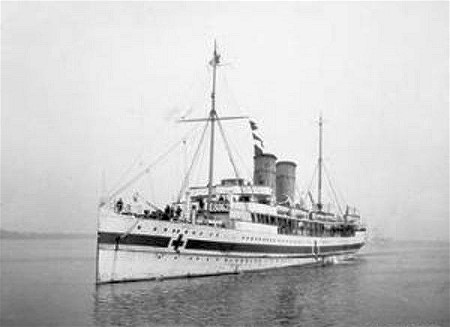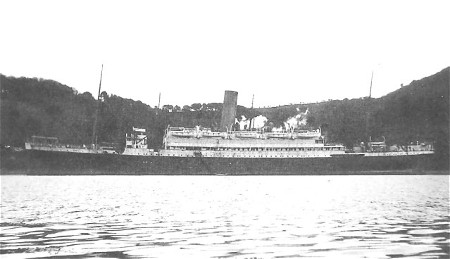|
Feb 25, 1895
|
Born in Liverpool, England
|
|
Nov 7, 1914
|
Attested into the 21st Battalion in
Kingston, Ontario
Ø Number 59006 (temporary number 837)
Ø Next of kin given as John Alexander, father, Kingsford, England
o His mother is noted as Mrs. L. Blackwell, 50 York Rd. Hove, Sussex,
England
Ø Previous occupation given as Farmer
Ø Previous military experience given as 2 years with the 15th
Regiment, Canadian Militia, Belleville
Ø Religion given as Methodist
Ø Assigned to “H” Company
o This was later reorganized into “D” Company
The battalion trained in the Kingston area with
headquarters in the Kingston Armouries
|
|
Dec 13, 1914
|
Admitted to the Kingston Hospital with a wound
to his hand
|
|
Dec 15, 1914
|
Discharged to duty from hospital
|
|
May 6, 1915
|
Embarked the RMS Metagama in Montreal, Quebec

|
|
May 15, 1915
|
Disembarked in Devonport, England and the
battalion proceeded to the West Sandling Camp near Hythe, Kent to continue training
|
|
Jul 14, 1915
|
Admitted to the Shorncliffe Military Hospital
with deformed toes. The small toe of his
right foot was amputated and an ingrown toenail was repaired.
|
|
Jul 27, 1915
|
Transferred to the Royal Victoria VAD (Volunteer
Aid Detachment) Hospital
|
|
Aug 24, 1915
|
Discharged from hospital to light duties
|
|
Sep 14, 1915
|
Embarked the St. Seiriol in Folkestone

|
|
Sep 15, 1915
|
Disembarked in Boulogne, France and the
battalion proceeded to St. Omer
|
|
Jan 11, 1916
|
While in the N & O front line trenches, he
was buried by the explosion of an artillery shell and suffered a concussion. He was admitted to the No. 5 CFA (Canadian Field
Ambulance)
|
|
Jan 12, 1916
|
Transferred to the
No. 8 CCS (Casualty Clearing Station) then transferred the same day to the No. 13 Canadian
General Hospital where his diagnosis was changed to read shell shock
|
|
Jan 19, 1916
|
Transferred to the No. 1 Convalescent Depot,
Boulogne
|
|
Jan 31, 1916
|
Discharged to the Base Details in Boulogne as
unfit for frontline service
|
|
Feb 20, 1916
|
Transferred to the Base Depot in Boulogne
|
|
Apr 11, 1916
|
Granted 7 days leave
|
|
Apr 21, 1916
|
Returned to duty from leave
|
|
May 2, 1916
|
Admitted to No. 9 Stationary Hospital with a
diagnosis that reads NYD (Not Yet Determined)
|
|
May 28, 1916
|
Diagnosis was changed to read VDG (Venereal
Disease Gonorrhea)
|
|
May 29, 1916
|
Discharged to duty at the CBD (Canadian Base
Depot) in the Rouelles Camp, Havre
|
|
May 30, 1916
|
Left the CBD and rejoined the 21st
Battalion the following day in the “A” Camp (later renamed the Micmac Camp)
|
|
Jun 13, 1916
|
Admitted to the No. 1 CFA after being buried by
a shell explosion diagnosed with shell shock. He
was transferred to the No. 3 Stationary Hospital the same day
|
|
Jun 16, 1916
|
Invalided to England aboard the Hospital Ship
Cambria

On arrival in England he was admitted to the No.
3 Northern General Hospital in Sheffield
Posted to the CCAC (Canadian Casualty Assembly
Centre) while in hospital
|
|
Jun 17, 1916
|
TOS the CCAC in Folkestone
|
|
Jul 14, 1916
|
Transferred to the Central Hospital in
Litchfield
|
|
Sep 3, 1916
|
Transferred to the Shorncliffe Military Hospital
|
|
Sep 10, 1916
|
Transferred to the Canadian Red Cross Hospital
in Buxton and the diagnosis reads Trench Fever. Lumbago
was later added to the diagnosis
|
|
Nov 21, 1916
|
Discharged from hospital and reported to the
CCAC in Hastings
|
|
Nov 29, 1916
|
On Command to the Command Depot in Hastings
|
|
Mar 11, 1917
|
Discharged from St. Leonard’s Hospital and
posted to the EORD and attached to No. 3 CCD
|
|
Mar 19, 1917
|
Posted to the 6th Reserve Battalion
in Seaford
|
|
May 27, 1917
|
Posted to the 21st Battalion
|
|
May 28, 1917
|
Arrived at the No. 2 CIBD (Canadian Infantry
Base Depot) in Etaples and TOS (Taken On Strength) the 21st Battalion
|
|
Jun 14, 1917
|
Left the CIBD and joined the 21st
Battalion in billets in Coupigny
|
|
Jul 28, 1917
|
Attached to the 4th TMB (Trench
Mortar Battery) for duty
|
|
Aug 16, 1917
|
While carrying ammunition to the front on the
night of August 15/16, there was an explosion and he was knocked unconscious. He does not remember anything until regaining
consciousness at the No. 16 General Hospital in Le Treport, admitted with a diagnosis that
reads Shell Shock. He was struck on the back
of his head with a shell fragment and also suffered from gas poisoning at the same time.
|
|
Sep 18, 1917
|
Invalided to England aboard the Hospital Ship
Essequibo

Admitted to the St. John VAD (Volunteer Aid
Detachment) Hospital in Cheltenham
Posted to the EORD while In hospital in England
|
|
Oct 1, 1917
|
Reported to be dangerously ill
|
|
Oct 5, 1917
|
Removed from the dangerously ill list
|
|
Nov 2, 1917
|
Transferred to the Canadian Convalescent
Hospital, Epsom. He is noted as sleeping
poorly, distinct tremors in hands and legs, as well as suffering from severe headaches and
vomiting
|
|
Jan 4, 1918
|
Transferred to the No. 5 Canadian General
Hospital, Liverpool
|
|
Feb 16, 1918
|
Discharged from hospital and invalided to Canada
aboard the Hospital Ship Llandovery Castle

|
|
Mar 1, 1918
|
Disembarked in Halifax, Nova Scotia and
proceeded to Kingston, Ontario
|
|
Mar 5, 1918
|
Admitted to the Queen’s University Hospital
with a diagnosis that reads Shell Shock
|
|
Apr 30, 1918
|
Granted sick leave until May 9, 1918
|
|
May 9, 1918
|
Failed to return from leave and declared to be
AWL (Absent Without Leave)
|
|
May 15, 1918
|
Returned from leave and forfeited 7 days pay for
overstaying his pass
|
|
May 20, 1918
|
Transferred to the Fettercairn Convalescent Camp
near Chaffey’s Locks, north of Kingston that was operated by the Hotel Dieu Hospital,
Kingston
|
|
Jul 12, 1918
|
Transferred back to Queen’s University
Hospital, Kingston
|
|
Jul 19, 1918
|
Discharged from hospital and TOS the District
No. 3 Casualty Company in Kingston
|
|
Jul 24, 1918
|
Discharged from the CEF in Kingston, Ontario
Ø Rank on discharge Private
Ø War Service Badge Class “A” issued, number not recorded
Ø Proposed residence on discharge 32 Wyatt St., London, Ontario
o This was later changed to 60 Wellington St., London, Ontario
Following his discharge the 1914-15 Star,
British War Medal and Victory Medals were sent to him at 32 Wyatt St., London
|
|
Jul 1, 1956
|
Harry Alexander died and his widow’s address
was recorded as Mrs. Lillian Alexander, 123 Jasper St., Syracuse, New York, USA
|
|